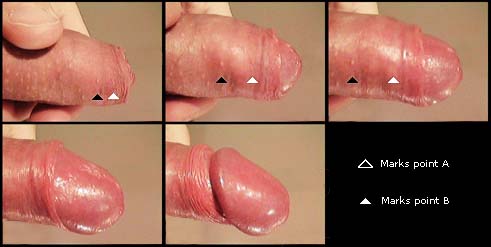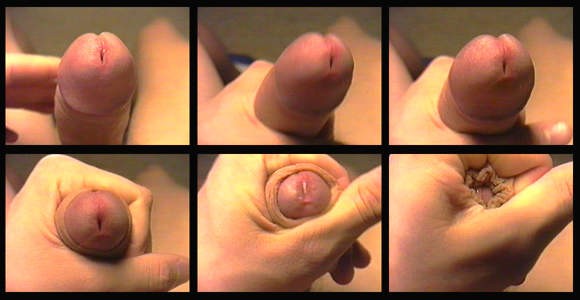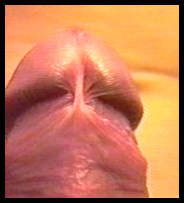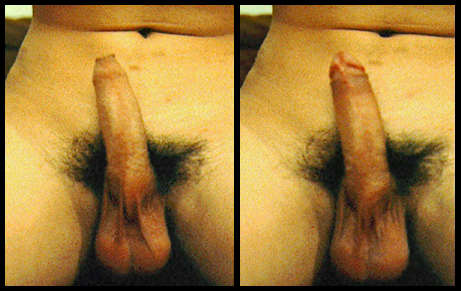The foreskin
The foreskin - What it does
The foreskin performs several important functions. Most of these functions
center on making sex more enjoyable, not only for just one, but for both
partners.
Protection
Makes sex feel better
Lubricates during intercourse
Lubricates during masturbation
Reduces the drop insensitivity through age
Allows the erection to grow
Increases sensitivity slowing intercourse
The foreskin - What it is
First what the foreskin is not: The foreskin is not a flap of skin on the end
of the penis. This kind of terminology has been used to imply that the
foreskin is something redundant with no real function, that can easily
be removed with no consequence. This is not the case.
The foreskin is special in that it is not directly attached as most skin is. It is free to slide up and down the shaft of the penis with almost no friction. The foreskin can be thought of as a continuation of the tube of skin that covers the shaft of the penis, but much longer. This tube of skin is firmly attached only at the base of the penis and at the head of the penis. In between the points of attachment this tube of skin has the special property that easily slides on the shaft of the penis rather than being firmly connected as most skin is. The foreskin's length and the fact that it is unattached in the middle allows it to slide up and down the shaft of the penis and roll in on itself over the head of the penis (see diagram below).
The foreskin is long enough so that it continues down the shaft of the penis and rolls in on itself over the head of the penis. For those of you who are only familiar with circumcised penises, that means that an intact penis has two to three times as much skin that a circumcised penis.
A foreskin is long. An intact penis has two to three times the length of skin that a circumcised penis has. When flaccid, most of this length is taken up in the double fold of skin covering the head of the penis. When erect the foreskin can roll back to allow the penis to lengthen while still allowing the skin on the shaft of the penis to remain loose. The foreskin is often long enough to cover the head of the penis while erect.
The foreskin is extremely sensitive. It is filled with nerve endings called stretch receptors that fire when they are stretched, rolled, or massaged.
An intact penis, erect with the foreskin being retracted

These pictures show the skin mobility for an intact penis, while erect. The
movement of skin marked by point A is several inches back and forth. The
foreskin also stretches a lot when pulled back. Notice how point B moves
and how the end of the foreskin widens to accommodate the head of the penis.
With the foreskin pulled back, it looks a lot like a circumcised penis.
Note the color and texture of the head of the penis. It is soft and sensitive
like the inside of the lip or the inside of the eyelid.
Anonymous photo taken from usenet news.
Things that are not obvious from these pictures:
The stretching and rolling action shown in the above pictures are very important.
The foreskin is filled with nerve endings called stretch receptors. These
nerve endings fire when they are stretched, rolled, or massaged. The only
purpose of these nerve endings is to make sex more enjoyable. The stretch
receptors are unlike the nerve endings in the head of the penis which are
very sensitive to friction but can be so sensitive that the sensation can
be irritating or painful. The nerve endings in the head of the penis tend
to trigger orgasm much more than the nerve endings in the foreskin.
The head of the penis has no skin. This may be a surprise to those of you who are familiar only with circumcised penises. The head of the penis is actually covered by a very thin moist mucus membrane, very much like the inside of the lip or the inside of the eyelid. The head of the penis is not meant to be exposed to the elements such as friction against clothing, friction during sex, the sun's rays, or soap (in infants urine or feces). The head of the penis is supposed to be protected by the warm, moist coccoon that the foreskin creates. If the foreskin is remvoed, the mucus membrane of the penis thickens in response to the lack of protection. It may look like skin, but it is not.
The foreskin is lined with smoothe muscle fibers which contract to make the foreskin wrap snugly around the head of the penis. These muscle fibers can relax to permit the foreskin to be retracted.
Friction. There is no friction.
An intact penis, erect with the foreskin being retracted, another
view

The skin sliding up and down the shaft of the penis acts as a lubricant for
masturbation or intercourse. The head of the penis can be extremely sensitive
to pain from friction. As the skin slides up and down the penis, the hand
does not directly touch the head of the penis. The foreskin rolls over
the head, allowing the hand to massage the head through two layers of skin
to minimize any irritation from friction. See Anatomy of the Penis and
Mechanics of Intercourse for more information.
Anonymous photo taken from usenet news.
A view of the frenulum, foreskin retracted

The frenulum is a Y shaped web of skin that connects the foreskin
to the underside of the head of the penis. The frenulum is kind of
like the web of skin under the tongue. This is the most sensitive part
of the penis, containing a huge number of nerve endings. Circumcision
usually removes all or most of the frenulum. For more information see
The Effects of Circumcision by Glenn M.J. Epps' Circumcision Facts.
Anonymous photo taken from usenet news.
An intact penis, erect with the foreskin covering and retracted

These pictures show just how much skin is in a foreskin. For many guys there
is enough loose skin to allow the foreskin to cover the head of the penis
while erect, even without something holding it in place. This amount of
coverage can be helpful because nocturnal erections do not expose the head
of the penis.
Anonymous photo taken from usenet news.
Paul Russo